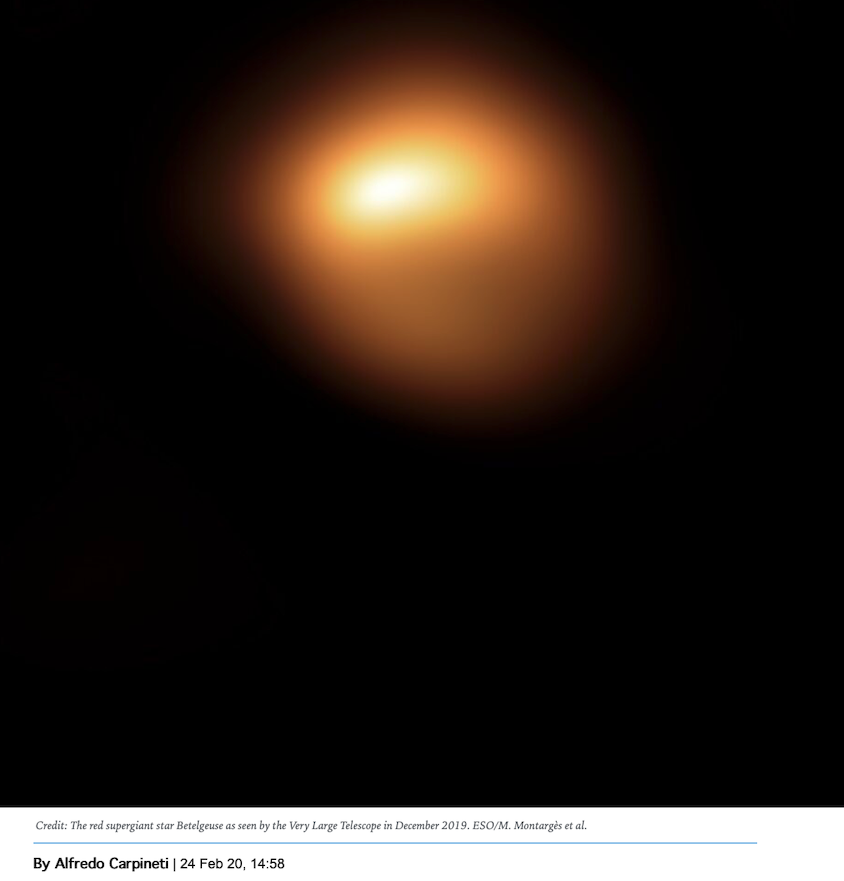
After months of progressive dimming, Betelgeuse has started brightening again. The pronounced dimming event that this peculiar red giant star experienced was the most severe in recorded history, but it appears to have come to an end.
Observations during February showed that the rate of dimming was slowing down following the dramatic drop in brightness late last year. Now astronomers have seen signs of rebrightening, discussing the increase in luminosity in an Astronomer’s Telegram as well as partially solving the mystery of the dimming event.
It is well known that Betelgeuse is a semiregular variable star. This means that there is some periodicity to its brightness changes, but how much it varies and the precise length of these periods are not set in stone. The lowest point of the dip that has just concluded took place about 424 days after the last measured minimum, matching up with the star’s primary period, which takes place every 420-430 days.
What remains to be understood is why the reduction in brightness was so significant this time around. Since last September, Betelgeuse has got more than 2.5 times dimmer, dropping out of the top 20 brightest stars in the night sky. And for this reason, astronomers want more telescopes on this peculiar object.
“Observations of all kinds continue to be needed to understand the nature of this unprecedented dimming episode and what this surprising star will do next,” the researchers wrote in the latest Astronomer’s Telegram.
Some of these observations are already coming in with another Astronomer’s Telegram, which details brand new infrared observations of the star. The infrared photometry measured in February does not differ from previous measurements, even those from decades ago, and these values are a good proxy for the total luminosity of the star. Since they have not varied much, the researchers behind these observations suggest that the changes in brightness are to do exclusively with the outer layers of Betelgeuse.
Betelgeuse is a red supergiant star with an estimated mass almost 12 times that of our Sun, but much much larger in size. If it switched place with the Sun, it would extend past the orbit of Jupiter. The star has a low density and its outer layers are strongly affected by even small changes.
It might be surprising to know that the star is not spherical, instead, its shape changes as a result of the many forces acting on it.
